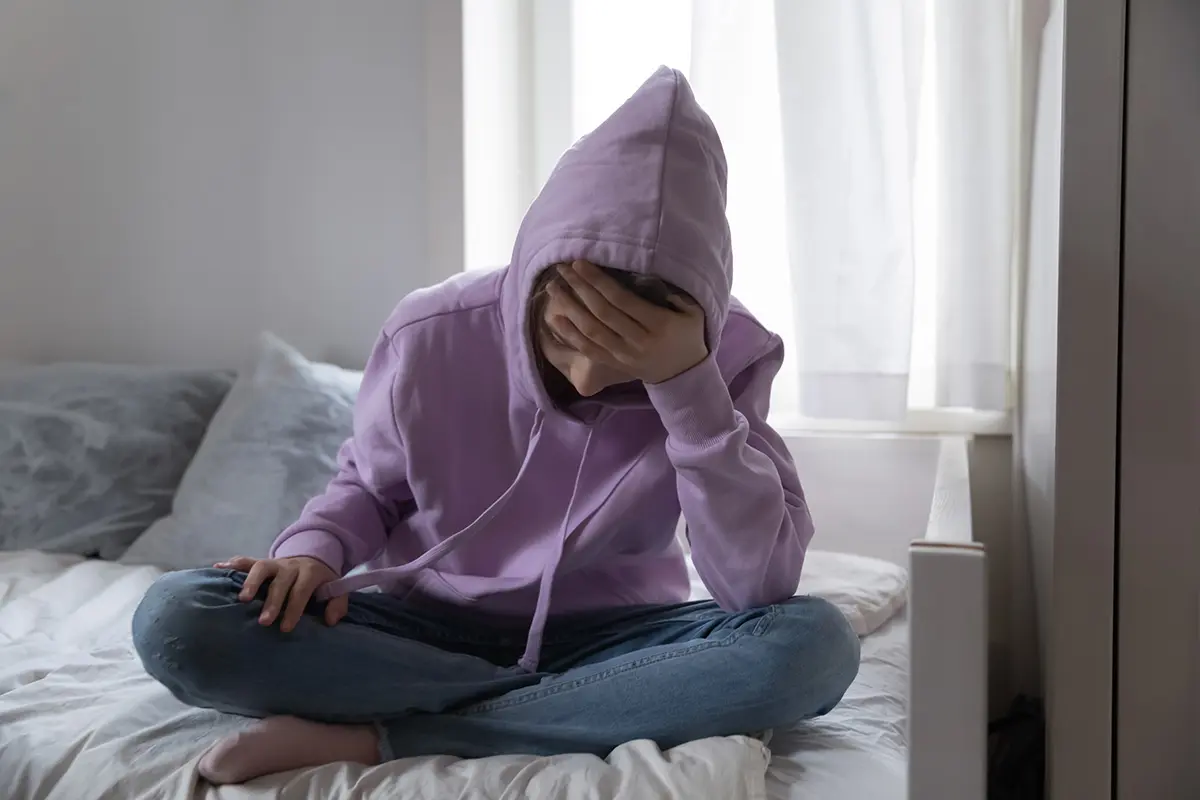Non-suicidal self-injury—often referred to as self-harm—involves any act of intentionally injuring or causing harm to oneself. While self-harm can take on various forms, Mental Health America reports that 70–90% of people who self-harm choose cutting as their preferred method. Self-harm is not a mental health disorder but rather a symptom of an underlying issue(s).
Without professional intervention, individuals who self-harm become stuck in a vicious cycle that can lead to long-term issues, including an increased risk of suicide. Harmony Hills offers a self-harm treatment program to help uncover and address the problems contributing to self-harming behaviors while teaching healthy coping mechanisms to help break the cycle. If you or someone you love self-harms, help is available. Contact Harmony Hills at [855.494.0357].
What Are the Signs of Cutting?
What is cutting? Self-harm can be scary, but it is treatable. Learning to recognize the signs of cutting can be challenging. Though they get a temporary sense of relief from the act of cutting, most people understand that it is an unhealthy behavior and go to great lengths to cover it up.
If you suspect someone you know is cutting, look for these common signs:
- Symptoms of depression
- A decline in daily functioning
- Inability to maintain stable relationships
- Expression of feelings of low self-worth, hopelessness, or helplessness
- Keeping sharp objects on hand
- Frequent reports of accidental injuries
- Wearing long pants and long sleeves, even in hot weather
- Fresh cuts, scratches, or wounds
Most cutting is done on body parts that can easily be covered by clothing, commonly the arms, thighs, and torso, with objects that are small, common, and easy to hide, such as thumbtacks, paperclips, safety pins, nail files, or razor blades. Many people use their fingernails if other objects are unavailable. Cutting can escalate when the underlying issues worsen or when the individuals need to increase the frequency or intensity of cutting to feel the same relief effects.
Understanding the Causes of Cutting and Self-Injury
Cutting and self-injury are maladaptive coping skills, not suicide attempts. It’s hard to figure out what is cutting sometimes. However, according to reports from Mental Health America, individuals who self-injure are ultimately nine times more likely to attempt suicide, highlighting the need for professional self-harm treatment.
Some people only engage in cutting and other self-injury a few times and then stop; however, many others get stuck in a repetitive, long-term pattern of self-injurious behavior. Understanding the causes of cutting and self-injury can help make it less scary, reduce angry feelings, foster compassion, and encourage the need to seek treatment.
The leading causes of cutting and self-injury are poor coping skills and an inability to manage emotions in healthy ways. Reasons individuals self-harm can include:
- Unresolved or ongoing trauma
- Untreated mental health conditions
- To cope with overwhelming feelings of anger, sadness, or guilt
- Self-punishment for perceived faults
- To express emotions that are too hard to verbalize
- To feel a sense of control over one’s life or circumstances
- To reduce emotional numbness
- Releasing emotional pain through physical pain
Whatever the reason for cutting and other self-injury, it is essential for individuals to know that help is available and to understand the potential consequences of not getting help. The relief that comes from cutting is temporary, and the act does not resolve the issues but exacerbates them.
Consequences and Complications of Cutting and Self-Harm
Cutting and other self-harm can have serious short- and long-term consequences and complications. The relief in these behaviors is typically followed by intense guilt, shame, and worsening self-esteem, which help perpetuate the cycle. Additionally, reliance on these behaviors prevents learning healthier, adaptive coping skills.
Other consequences and complications can include:
- Infection from unhealed wounds or the use of unsterile objects
- Worsening of underlying issues that remain untreated
- Higher risk of suicide
- Risk of severe injuries
- Scarring or disfigurement
- Increased risk of substance use disorders
- Impaired relationships
- Social isolation
Keeping the secret of cutting and self-harm is a burden that makes life lonely and more complex. It is possible to overcome this cycle through evidence-based and holistic mental health therapies designed to address your unique needs.
Self-Harm Treatment Options
At Harmony Hills, we provide a comprehensive self-harm treatment program that addresses the underlying issues contributing to self-harming behaviors. Our experienced and compassionate team of mental health professionals works together with individuals to develop personalized treatment plans that may include:
- Individual therapy to address the root causes of cutting and other self-injurious behaviors
- Group therapy to work through emotions, build healthy coping skills, and foster a sense of community
- Medication management, if applicable, to manage co-occurring mental health conditions
- Holistic therapies such as yoga, mindfulness practices, and art therapy to promote overall well-being and provide healthy outlets for emotions
Our self-harm treatment program also offers aftercare services to support individuals in maintaining their progress after leaving our facility. We understand that each person’s journey is unique, and we are dedicated to providing individualized care every step of the way.
Break the Cycle of Cutting and Self-Harm at Harmony Hills
For individuals stuck in the cycle of cutting, stopping can feel terrifying because it has become their trusted way of finding relief from overwhelming emotions or circumstances. Through self-harm treatment at Harmony Hills, you or your loved one can learn the skills necessary to break the cycle for good. Contact us at [855.494.0357] to speak to a team member and learn more about self-harm treatment.







